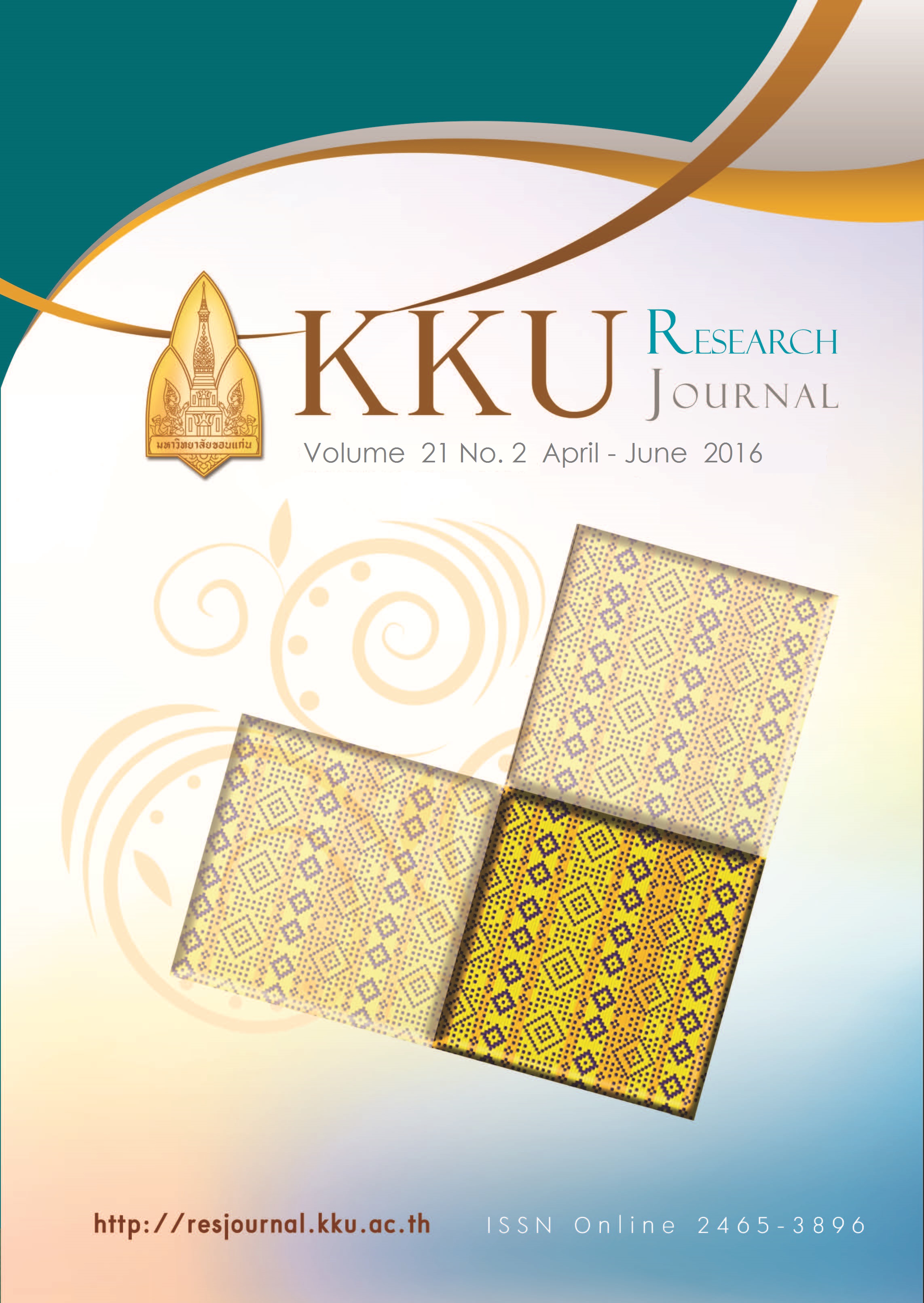Improved lactic acid productivity by simultaneous recovery during fermentation using resin exchanger
Main Article Content
Abstract
Lactic acid is a versatile organic acid that can be used in various applications. One of the promising applications of lactic acid is in bioplastic industry. Lactic acid is used as the monomer building block in polylactic acid synthesis. Unlike the existing applications in food and pharmaceutical industries in which lactic acid is used as the additive, it becomes the major raw material in polylactic acid production. This, therefore, raises the demand of lactic acid and eventually increases the market price. In order to expedite the bioplastic industry, cost competitiveness to the existing plastic is a big concern. The cost effectiveness and process robustness are the key success factors in bioplastic industry. Currently, lactic acid is produced via bacterial fermentation using the lime-based process. After fermentation, lactic acid was recovered from the fermentation broth by various techniques including solvent extraction, reactive distillation, ion exchanger, and electrodialysis. To achieve low production cost, not only high fermentation rate is necessary, effective recovery process is also required. In this study, we attempted simultaneous recovery of lactic acid coupled with fermentation to drive the productivity and long-term operation in continuous culture. Anion exchange resin, Amberlite IRA-400, was selected for recovering lactic acid from the bacterial culture. The preliminary results in batch adsorption showed that among other resins studied, Amberlite IRA-400 provided the best separation efficiency. Further study on fixed bed adsorption and simultaneous fermentation and lactic acid recovery using this resin were conducted and the results will be discussed in this presentation.
Article Details
References
[2] Anuradha R, Suresh AK, Venkatesh KV. Simultaneous saccharification and fermentation of starch to lactic acid. Proc.Biochem.1999;35:367-5. doi:10.1016/S0032-9592(99) 00080-1
[3] Cao Q, Lu B-R, Xia H, Rong J, Sala F, Spada A, Grassi F. Genetic diversity and origin of weedy rice (Oryza sativa f. spontanea) populations found in north-eastern China revealed by simple sequence repeat (SSR) markers. Annals of Botany. 2006 Dec;98(6).1241-52
[4] Datta R, Tsai SP, Bonsignore P, Moon SH, Frank JR. Technological and economic potential of poly (lactic acid) and lactic acid derivatives. Federation of European Microbiological Societies. 1995 Feb 1; 16(2-3);221-31
[5] John RP, Nampoothiri KM, Pandey A. Fermentative production of lactic acid from biomass: an overview on process developments and future perspectives. Appl. Microbiol. Biotechnol. 74, 524. Med J Mar. 2007 Jan 16;74(3):524-34
[6] Lunt J. Large-scale production, properties and commercial applications of polylactic acid polymers. Polym. Degrad. Stabil. 1998;59(1).145-52.doi:0.1016/ S0141-3910(97)00148-1
[7] Moldes A, Alonso J, Parajó J. Recovery oflactic acid from simultaneous saccharification and fermentation media using anion exchange resins. Bioprocess
Biosyst Eng.. 2003 Med J Jul. 2003 Feb 19;25(6):357-63
[8] Sodergard A, Stolt M. Properties of lactic acid based polymers and their correlation with composition. Prog. Polym. Sci. 2002;27(6).1123–63. doi:10.1016/S0079-6700(02) 00012-6
[9] Tay A, Yang, ST. Production of L-(+)-lactic acid from glucose and starch by immobilized cells of Rhizopus oryzae in a rotating fibrous bed bioreactor. Biotechnology and Bioengineering. 2002;80(1). 1-2.doi:10.1002/bit.1034080
[10] Vaccari G, González A, Anna L, Dosi E, Brigidi P, Matteuzzi D. Fermentative production of L-lactic acid by Lactobacillus casei DSM 20011 and product recovery using ion exchange resins. Applied Microbiology and Biotechnology. 1993;40(1).23-27.doi: 10.1007/ BF00170423
[11] Vishnu C, Seenayya G, Reddy G. 2000. Direct fermentation of starch to L(+) lactic acid by amylase
producing Lactobacillus amylophilus GV6. Bioprocess and Biosystems Engineering. 2000;23(2).15558.doi:10.1007/ PL00009119


